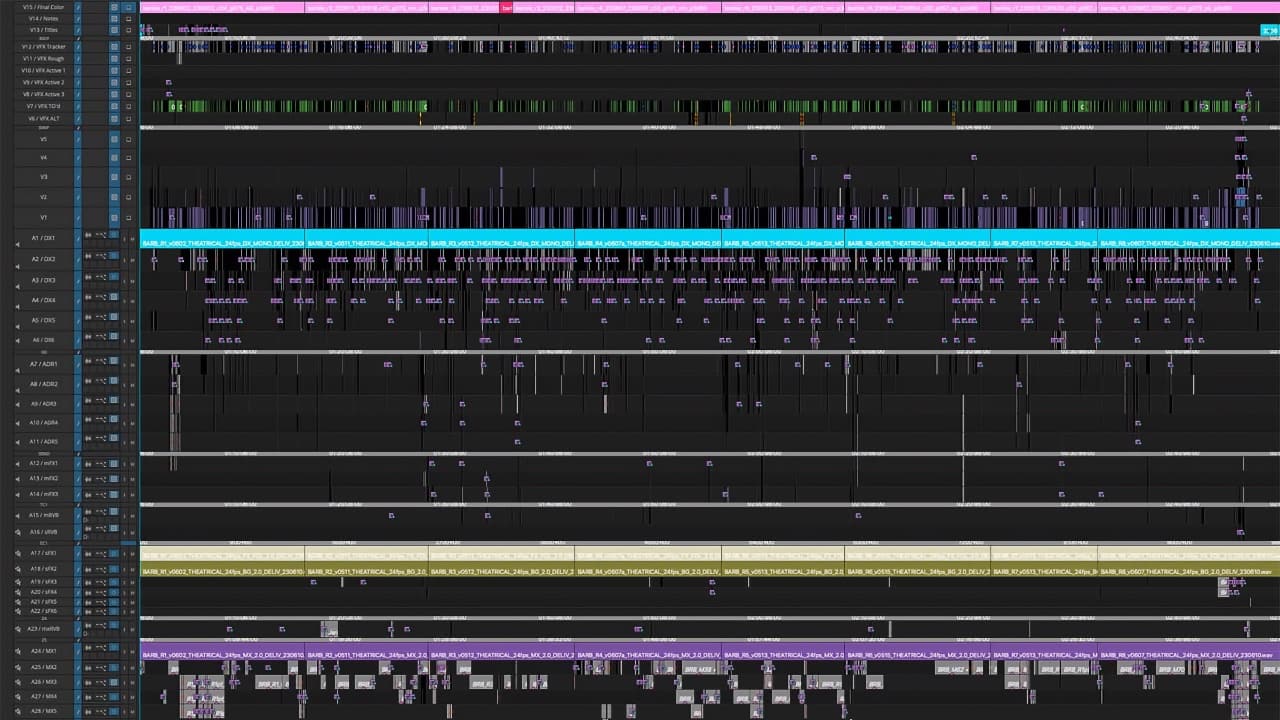
Having already talked Oppenheimer this week, it was only right to find the time to delve into Barbieworld and a Rough Cut interview on the frame.io insider blog with the Barbie editing team didn’t disappoint.
Matt Feury is host and producer of The Rough Cut podcast, as well as the Senior Director of Artist Relations for Avid, and he often comes up with some absolute gems. His interview with the Barbie editing team of Nick Houy ACE, Matt Garner, and Maya Rivera is as entertaining as you would expect, and is happily available as either part of the Rough Cut podcast or you can read the compete transcript on the frame.io insider blog.
It’s somewhere north of 10,000 words though, so we thought we’d highlight a couple of interesting bits for you, not all of which are even about Barbie. In fact we're going to namecheck both Martin Scorsese’s The Irishman and Godfrey Reggio’s Koyaanisqatsi as well as Barbie, which are three movies you don’t often find inhabiting the same paragraph.
From de Niro to Ford
There are about 1500 VFX shots in Barbie, which is similar to the amount in Scorsese’s 2019 epic gangster film The Irishman. Matt Garner worked on both and offers this intriguing nugget.
“On The Irishman it was about developing a new technology. That kind of de-aging hadn’t been done before, and it was using a new technology created by Industrial Light & Magic.
"I think it was frustrating for Martin Scorsese because he had to wait three months to see what a de-aged Robert De Niro would look like. Then he’d give notes and have to wait another two months to see the revision.
“I heard that on Indiana Jones and the Dial of Destiny they were getting dailies back and already seeing what young Harrison Ford was going to look like. That’s come a long way in just a couple of years.”
Filling in the script
Sometimes the Barbie script would just include a single line that would then have to be filled in by the team working on the film. One such direction simply said “A Terrence Malick-esque sequence occurs.”
The team picked that up and ran with it. And ran with it hard.
“That [was] it,” says Nick Houy. “We [had] never shot anything for it. We never did anything. So we just tried a bunch of stuff. We tried stock footage, we tried footage of life. We were constantly referencing Malick, obviously, but also Godfrey Reggio movies like Koyaanisqatsi and Naqoyqatsi and, of course, Man with a Movie Camera and Baraka, all these movies where it’s about life and you see a flower blooming quickly.
“We thought that none of it quite worked, so we started using old Super-8 footage and then our own personal footage. It was a constant evolution. While we were working on this huge Warner Brothers movie, we were also making thousands of Stan Brackage-esque short films, all of us, with our own material or whatever we could find.”
Putting it all together
Barbie was put together at Company 3 in New York, with the editing team’s Avids all hooked into a Nexus and the team occupying its own floor with a screening room in the middle for showing VFX.
“It was the first show that we cut in 4K,” says Garner. “There were twelve or so editing systems and everyone had their own space, their own room with their system.
“We were a little nervous about cutting in 4K. None of us had done it before, and not many shows that we talked to had done it. Company 3 seemed positive that it would work well. We were on the newer ‘cheesegrater’ Mac Pros and a fairly new operating system for Avid, all of which we hadn’t really experienced before. But I have to say it ran really smoothly.
“We only had a few minor hiccups here or there. As far as the VFX tracking and workflow, that was constantly evolving with the amount of elements and tracks. We didn’t have to have two separate sequences. Everything was in our own shared timeline. We had a couple of tracks that were our own where we could do what we wanted. We just tried to make sure that everything below it, all the key tracks, were kept solid.”
And, for those of you who really want to see what the final edit looked like, here it is.

And that is that. But honestly, it’s a great piece, that really gets across the creative process and ultimate fulfilment of working on a major movie with major backing and some major artistic clout on behalf of the director. Go have a read.
Tags: Production Editing


Comments